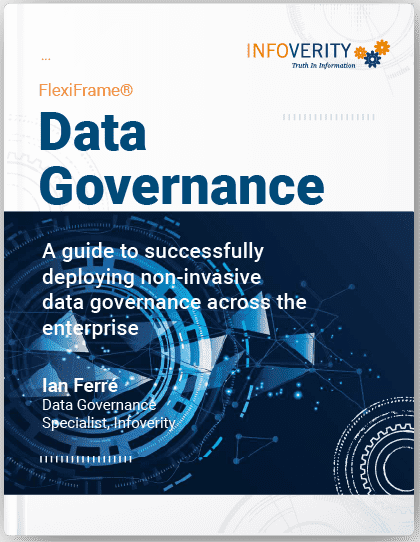Even for the most seasoned companies data governance is rarely easy. Creating a successful data governance function takes continued attention and focus from the entire business. But when done well, it can be a powerful and integral part of digital transformation and business optimization.
The mistake: Getting stuck in the IT silo
The solution: Don’t go it alone
Frequently, companies view data governance solely as a matter of technology, rather than something that impacts the entire organization. As a result, IT departments often feel empowered to try to solve the problem of data governance on their own. Or they find the business has problems or complaints with data products produced by IT, yet have no time or resources to help solve the underlying problems. IT then feels forced to address the problem without much support from the business. This siloed approach is almost universally a mistake.
IT and business units need to work arm-in-arm at each stage for data governance to succeed. The business side understands the practical need and use cases for the data (what problem it can solve and what form it needs to take in order to provide real insight), while IT can provide guidance on the mechanisms that are needed to ensure the data is secure, accurate and consistent.
The mistake: Taking on too much at one time
The solution: Walk before you run
Being realistic about data governance also means recognizing that governance is not the full-time job or focus of almost anyone within the organization. While a handful of businesses may have dedicated governance teams, most companies aren’t that well resourced. Regardless, whoever is tasked with data governance must work hand in hand with their IT and business counterparts to map out what can be accomplished in the near-, mid-, and long-term and which efforts can deliver immediate results. This will help to keep these limited resources focused where the effort is needed most.
The mistake: “We don’t have time for data governance”
The solution: Make time now or lose time later
Many companies think they don’t have time to address data governance. This idea is perpetuated if team leads believe this and don’t emphasize its importance with their teams. For example, if you have a sales leader who doesn’t enforce good governance in your CRM data, your sales, marketing and product management functions will lose time when they try to extract and analyze data because a portion of it is missing, wrong or incomplete. Data remediation projects can end up costing much more time in the long run.
The mistake: Thinking your people can just add data governance best practices to their to-do list
The solution: Devote adequate resources to the cause
The mistake: “People will do what we tell them to do”
The solution: Make change management a part of any data governance project
Change is hard and humans naturally resist it. By following even the most basic change management principles as a way to build understanding, adoption and advocacy, you help staff become more willing and even eager to participate in the governance process. They see why it matters, the impact on the business, and how they fit in the bigger picture. Even a modest tactical plan in support of change management can move your teams along the change curve from resistance to understanding to adoption to enthusiastic advocacy.
Knowing where to focus your efforts
While it is important to avoid mistakes, data governance won’t come to life unless you take proactive steps. Knowing what to tackle when can be challenging for any business. Here are four basic steps that can help you prioritize your work effectively:
Identify pain points that are caused by data or a lack of data
Begin the design process. In this stage, companies break down which projects should take precedence, define their expected measures of success and define how and why they can show quick value as soon as possible. For instance, this could be by picking a few vital data fields that have no standards, defining the standards they should have, then operationalizing the standard by enforcing them at the data source.
Fix old data. Once companies have ensured all new data will be governed correctly, they can go back and work on the quality and governance of existing data.
Run pilots to demonstrate value. Once you identify which projects can be started immediately, pilots can be run to prove out the value of the data governance strategy. If the pilot is designed properly, it can show results quickly.
Repeat and expand projects to show value over time. As the trial projects prove their value, you can begin to process other projects and begin to scale the effort more broadly.
Obtain clearly stated executive commitment to a data governance framework
A lack of executive commitment can kill a data governance program. We’ve seen this unfold many times. Executives may have been on board at the beginning, but when other issues arose in the business, they deprioritized governance and failed to communicate the importance of it in a sustained way. Once this happened, the governance program failed. That’s why we believe that executives must insist on adding this work to the agenda for the entire company.
Celebrate data governance victories large and small
It’s important for companies to celebrate victories, even small ones, throughout the implementation and adoption process. When a data governance project is going well and starting to show results, celebrate it. Be specific about the who, the how and the why. This will keep employees feeling connected to the process and maintain enthusiasm by illuminating tangible benefits that might otherwise go unnoticed or under-appreciated.
Take the long view on data governance strategy
Ultimately, data governance is a marathon, an endurance game, not a sprint. To win it, companies need discipline, structure and sustained action over time. By recognizing some of the potential mistakes we’ve outlined here, by considering the solutions we’ve seen work again and again, and by taking a long view of data governance, it is possible to create real wins for your business. With a solid data governance program you can equip your company to use data more strategically, ease burden on your teams, drive time and cost savings, and create new opportunities for your business.
About Infoverity
For more information on Infoverity solutions, contact us today.


